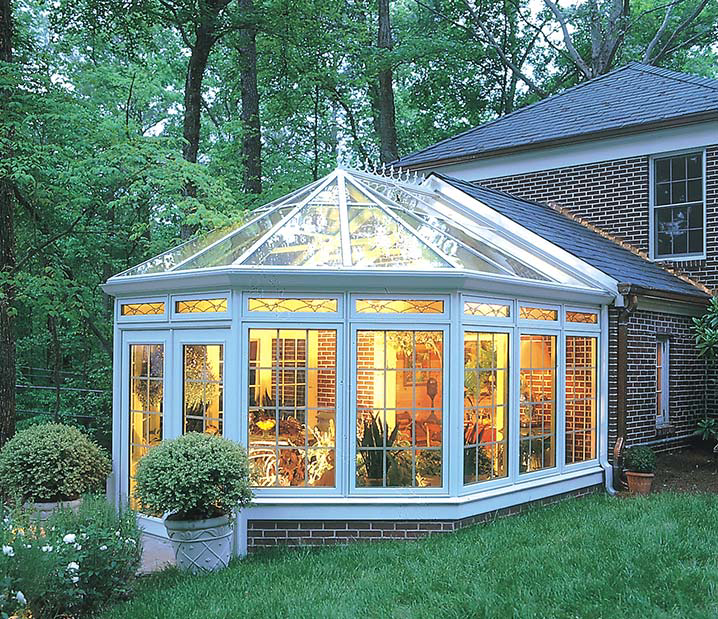
Introduction: Transforming Your Deck into a Year-Round Oasis
Dreaming of enjoying your deck throughout the year without worrying about snow, rain, or chilly winds? Converting your deck into a four-season room is the perfect solution. It offers additional living space, enhances your home’s value, and allows you to enjoy the outdoors without the inconvenience of bugs or unpredictable weather.
A four-season room is designed for comfort year-round. Imagine cozy winter mornings with a cup of coffee or relaxing summer evenings without the mosquitoes. Whether you want a peaceful retreat, a playroom, or a bright dining area, building a four-season room on your deck opens up many possibilities.
This guide will walk you through everything you need to know — from assessing whether your deck is ready, to obtaining the necessary permits, to choosing materials for weatherproofing. We’ll also provide design ideas, rough costs, and useful tips to ensure your new space feels like a seamless part of your home.
If you’re ready to enjoy your backyard all year round, let’s dive in!
Evaluating Your Existing Deck’s Suitability
Before you start constructing walls and adding a roof, ensure that your deck can support the weight and structure of a four-season room. A four-season room is heavier than an open-air deck due to walls, windows, insulation, and potentially HVAC systems. Not every deck is built to bear such loads.
Here’s how to check:
- Structural Integrity
Examine your deck for sagging boards, loose railings, or shaky posts. A four-season room requires a solid foundation. If your deck feels wobbly, it needs some strengthening before you proceed.
Tip: Hire a licensed contractor or structural engineer to inspect the deck. They’ll check if it meets local building codes and if it can handle the additional weight. - Load-Bearing Capacity
Even if your deck looks solid, it may not be designed to support the weight of a room. Most decks are built to handle around 40 pounds per square foot (psf), but a four-season room might require 60 psf or more. A professional can assess if your current footings and framing are adequate or if reinforcement is needed. - Foundation Stability
If your deck sits on simple piers or blocks, it might not be stable enough for an enclosed room. Many decks need stronger foundations — especially in areas with freeze-thaw cycles Concrete Front Porch.
Good to know: In areas like Minnesota, Michigan, or upstate New York, the ground may freeze several feet deep, requiring a foundation that goes below the frost line.
Next Step?
👉 If your deck passes these checks, you’re ready to move on to designing your four-season room!
Navigating Building Permits and Local Regulations
Building a four-season room on your deck involves more than just construction; it also requires compliance with local regulations. Failing to secure the proper permits can result in fines or force you to undo your work.
Here’s what you need to know:
- Why You Need a Permit
Adding walls, insulation, windows, and a roof changes the structure of your home. Local governments want to ensure everything meets building codes for safety, energy efficiency, and taxes. A permit protects your investment and ensures that your room is built to last. - How to Get a Building Permit
- Start with your local building department: Visit their website or office to find out the paperwork needed.
- Submit detailed plans: You’ll likely need drawings showing your deck’s current layout and how the four-season room will be constructed. Some areas may also require an engineering report.
- Pay the application fee: Expect to pay between $100–$1,000, depending on the project size and location.
- Schedule inspections: Once approved, an inspector will review your progress to ensure safety and compliance.
Pro Tip: In areas like Florida, California, or Colorado, there are additional regulations due to risks such as hurricanes or earthquakes. Always check local rules.
- Homeowner Associations (HOAs)
If you live in a neighborhood governed by an HOA, be sure to review their guidelines. Many HOAs have strict rules about exterior modifications, including what colors you can use or how the room should look.
Bottom Line
👉 Getting the necessary permits upfront helps avoid delays, fines, and costly mistakes.
Designing Your Four-Season Room Layout and Features
This is where the fun begins — designing your four-season room! Good design isn’t just about aesthetics; it’s about creating a space that meets your needs year-round.
Here’s what to consider:
- Purpose and Function
Decide what you’ll use your new room for. Some ideas include:
- A second living room
- A sunny breakfast nook
- A cozy reading area
- A playroom for kids
Knowing your intended use will help guide the layout, furniture, and even heating and cooling choices.
Tip: Draw a simple floor plan with furniture, windows, and doors to help you visualize the space.
- Windows and Natural Light
A four-season room should be flooded with natural light, but the windows must be energy-efficient. Look for:
- Double or triple-pane glass
- Low-E coatings to block UV rays
- Argon gas fills for insulation
Smart Move: Place windows to maximize sunlight during winter and provide shade in summer, depending on your house’s orientation.
- Flooring Choices
Choose flooring that can handle temperature swings. Good options include:
- Luxury vinyl plank (LVP)
- Engineered hardwood
- Porcelain tile
Avoid hardwood or carpet, which can warp with changing humidity levels.
- Heating and Cooling
For year-round comfort, your four-season room needs temperature control. Here are some options:
- Extend your HVAC system if feasible
- Install a mini-split system
- Use electric baseboard or portable heaters
Good Design: Plan your layout, lighting, flooring, and comfort features before you start building, not after.
Choosing the Right Materials for Year-Round Comfort
Selecting the right materials is crucial for a four-season room that stays comfortable in all weather conditions.
Here’s what to prioritize:
- Insulated Windows and Doors
Opt for insulated windows and doors to reduce energy costs, keep drafts out, and block noise. Look for ENERGY STAR® products for better performance in extreme climates.
Quick Tip: Sliding glass doors with double-pane glass are ideal for energy efficiency and easy outdoor access.
- High-Performance Insulation
Proper insulation in the walls, roof, and floors ensures year-round comfort. Choose:
- Spray foam insulation
- Rigid foam boards
- Batt insulation (fiberglass or mineral wool)
- Durable Siding and Roofing
Your four-season room faces harsh weather, so select materials like:
- Vinyl siding for low maintenance
- Fiber cement for durability
- Metal or architectural shingles for a long-lasting roof
- Weather-Resistant Flooring
Consider upgrading your deck flooring for better moisture resistance. Options include:
- Composite decking
- Treated wood with waterproof sealers
- Porcelain tile with waterproof grout
Invest Wisely: Always spend on quality windows, insulation, and siding for long-term comfort and durability.
Construction Phase: Building Your Four-Season Room
Once you have your plan and materials, it’s time to build. Here’s the step-by-step process:
- Reinforce the Deck
Strengthen your deck before adding walls or a roof. This may involve adding extra joists, beams, and reinforcing footings. - Build the Walls and Roof
Frame the walls, install insulation, then add windows and doors. A vaulted or cathedral ceiling can add a bright, spacious feel. - Seal and Weatherproof
Ensure the room is sealed tightly to keep out moisture and drafts. Add a moisture barrier, seal joints, and install flashing around windows and doors. - Interior Work
Finish the interior with drywall, trim, paint, and flooring that suits your climate.
Adding Heating, Cooling, and Electricity
Now it’s time to add systems to ensure your room is comfortable year-round.
- Heating Options
Consider extending your HVAC system, installing a mini-split, or using electric heaters. - Cooling Options
Install a mini-split, ceiling fans, or portable air conditioners. - Electrical Wiring
Plan outlets for lights, fans, and electronics. Hire a licensed electrician to ensure the work is up to code.
Finishing Touches: Decorating and Furnishing Your Four-Season Room
Once your room is built and functional, it’s time to decorate and furnish it.
- Furniture
Opt for outdoor-rated or durable indoor furniture that can handle temperature fluctuations. - Soft Touches
Add cushions, throws, and rugs for comfort and style. - Lighting
Install recessed lighting, pendant lights, and floor lamps for flexibility. - Greenery
Bring in plants to enhance the room’s atmosphere and air quality. - Personalize
Add art, photos, and unique décor to make the space your own.
FAQs About Building a Four-Season Room
- How Much Does It Cost?
Expect to spend between $15,000 to $40,000, depending on size, materials, and location. - Do I Need a Permit?
Yes, a permit is required as a four-season room is a structural addition. - How Long Does It Take?
Building a four-season room typically takes 2 to 6 months. - Can I Use My Room Year-Round?
Yes, it’s designed for use all year with proper insulation and climate control. - What Are the Best Heating and Cooling Options?
Ductless mini-splits, electric heaters, and ceiling fans are great options. - What Materials Are Best?
Use insulated windows, high-performance insulation, and weather-resistant siding and flooring. - Can I Build on My Existing Deck?
Yes, but the deck must be reinforced to support the added weight.
Still have questions?
👉 Consult a local contractor for expert advice and personalized guidance.






